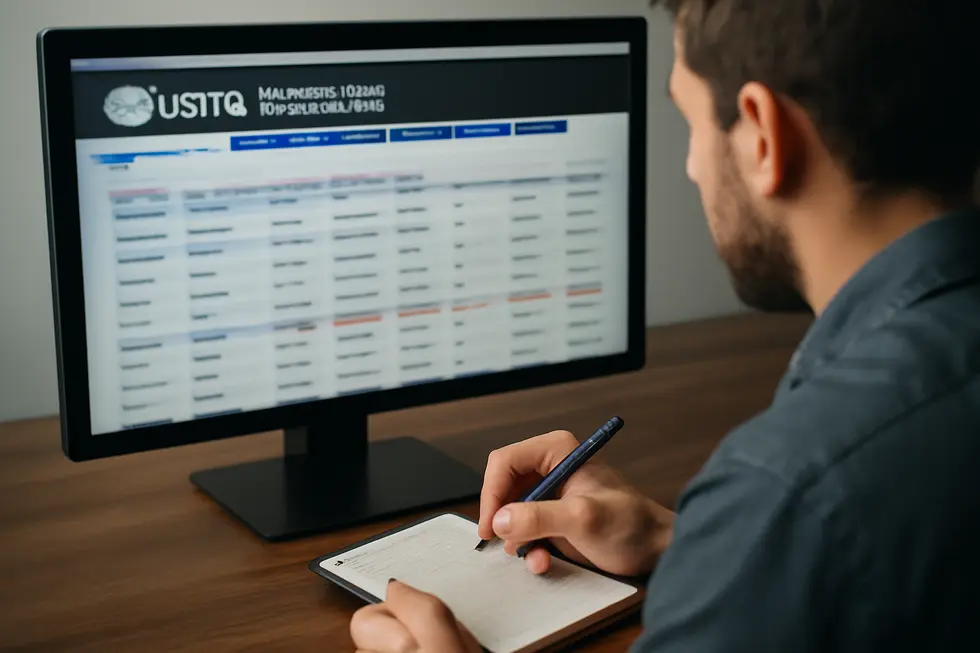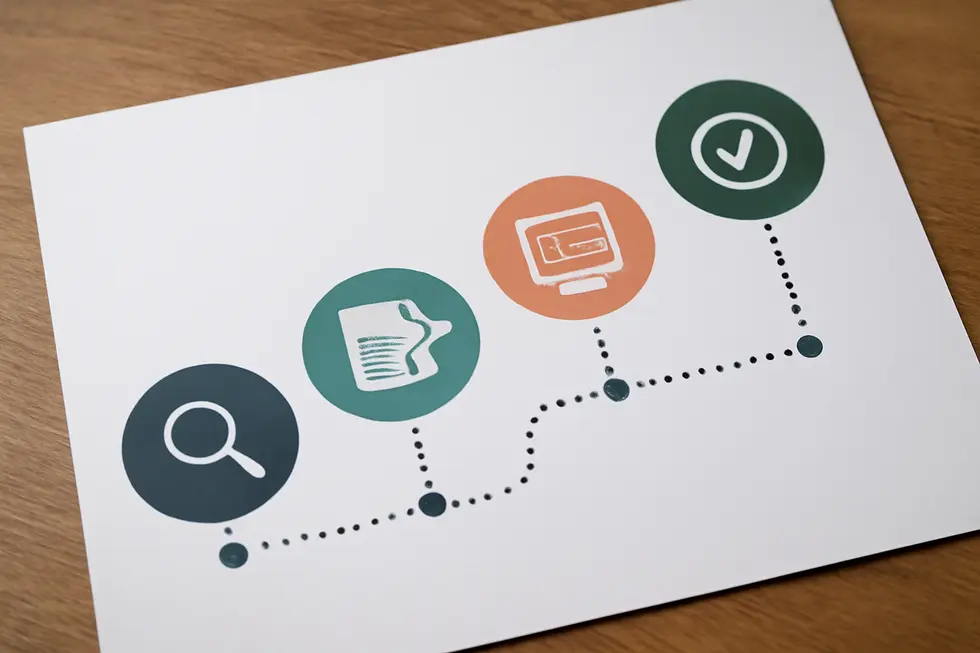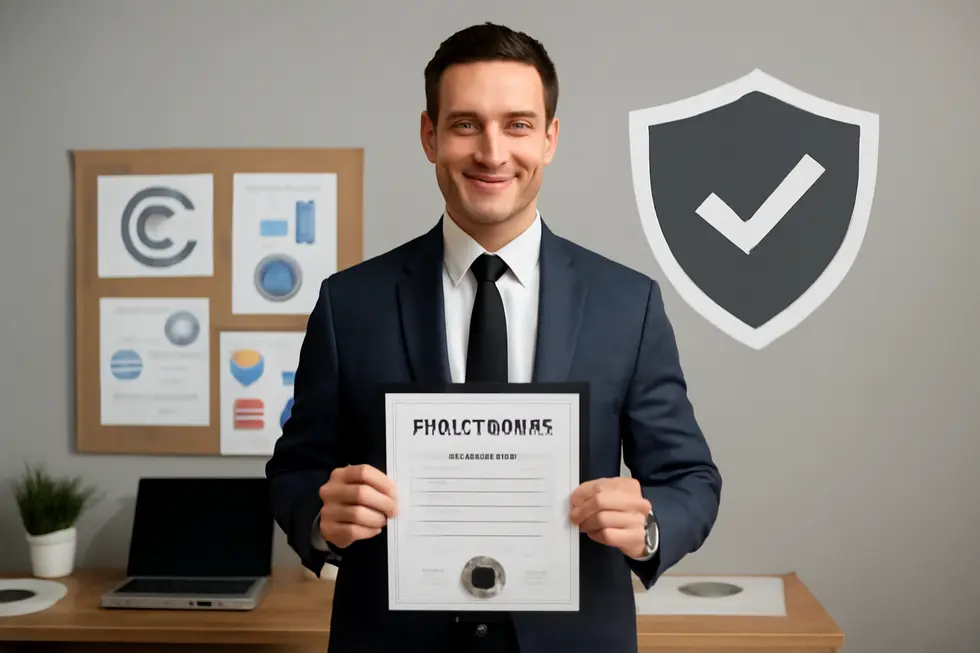Introduction
Owning a unique phrase or slogan can be a powerful asset for any business. However, many business owners wonder if these valuable combinations of words can be patented. The truth is, phrases cannot be patented because patents reserve protection for inventions and novel processes, not words or slogans. Instead, trademark law offers the legal tools necessary to protect your brand’s distinct phrases in commerce. This guide breaks down what you need to know: from understanding why patents aren’t applicable to phrases, to conducting trademark searches, filing applications, navigating fees and legal requirements, and following best practices to ensure your phrase remains uniquely yours. Each chapter is designed to build your knowledge progressively, empowering you to confidently protect your business’s most recognizable expressions.
Tables of Contents
Chapter 1: Understanding Why You Cannot Patent a Phrase and the Role of Trademarks in Protecting Phrases
- The Crucial Legal Divide: Why Patents Exclude Phrases While Trademarks Secure Their Commercial Identity
- Why Phrases Are Ineligible for Patents but May Qualify for Trademark Protection
- How Trademarks Secure Phrases as Unique Brand Identifiers in the Marketplace
- Navigating the Boundaries of Trademark Protection: How Business Classes Define Phrase Rights
- Strategic Steps to Register and Protect Your Phrase Trademark Effectively
Chapter 2: How to Conduct a Trademark Search When Considering How to Patent a Phrase
- Pinpointing the Right Trademark Classes to Secure Your Phrase’s Commercial Identity
- Mastering the USPTO TESS Database: Your Essential Trademark Search Tool for Phrase Protection
- Interpreting Trademark Search Results: Navigating Legal Risks When Protecting Your Phrase
- Expanding Trademark Searches: Navigating State, Common Law, and International Databases to Protect Your Phrase
- Effective Strategies for USPTO Examination and Crafting Responses to Office Actions on Phrase Trademarks
Chapter 3: Step-by-Step Guide on How to Patent a Phrase by Filing a Trademark Application
- Selecting a Distinctive Phrase and Confirming Its Eligibility for Trademark Registration
- Mastering the Essential USPTO Search to Secure Your Phrase for Trademark Filing
- Navigating Trademark Filing Options and Application Preparation for Securing Phrase Protection
- Mastering the USPTO Examination: Effectively Navigating Office Actions When Trademarking a Phrase
- Navigating the Trademark Journey: From Application Filing to Final Registration of Your Phrase
Chapter 4: Legal Requirements and Fees Associated with How to Patent a Phrase Through Trademarks
- Navigating Distinctiveness and Eligibility: The Legal Criteria and Costs of Trademarking a Phrase
- Navigating the Trademark Application Process: Essential Legal Steps and Costs to Protect a Phrase
- Navigating the Costs and Legal Criteria for Trademarking a Phrase
- Navigating Timelines, Costs, and Ongoing Obligations for Trademarking a Phrase
- Navigating Post-Registration Responsibilities and Enforcing Trademark Rights for Your Phrase
Chapter 5: Best Practices for Successfully Registering and Protecting Your Phrase When Learning How to Patent a Phrase
- Choosing the Right Intellectual Property Strategy: Trademarking Phrases Versus Patenting Inventions
- Mastering Phrase Protection: Conducting Clearance Searches and Crafting a Unique Trademark for Your Phrase
- Crafting Precise and Consistent Language to Strengthen Your Phrase Protection
- Mastering Trademark Registration and Vigilant Protection to Secure Your Phrase’s Identity
- Strategic Registration and Vigilant Enforcement: Ensuring Strong Trademark Protection for Your Phrase
Chapter 1: Understanding Why You Cannot Patent a Phrase and the Role of Trademarks in Protecting Phrases

1. The Crucial Legal Divide: Why Patents Exclude Phrases While Trademarks Secure Their Commercial Identity
Patents and trademarks serve distinctly different legal purposes, which explains why phrases cannot be patented but can be trademarked. Patents protect inventions or technical innovations that are new, useful, and non-obvious, such as machines or processes, granting exclusive rights for about 20 years. In contrast, trademarks safeguard words, phrases, logos, or symbols that identify the source of goods or services, preventing consumer confusion. Because phrases are considered expressions rather than inventions, they fall outside patent law’s scope. However, when a phrase functions as a brand identifier in commerce, trademark law allows protection indefinitely, provided the mark remains distinctive and actively used. This legal distinction highlights the importance of trademarks for phrase protection over patents. For further details on trademarking phrases, see this comprehensive trademark protection for business names and logos.
2. Why Phrases Are Ineligible for Patents but May Qualify for Trademark Protection
Patents protect inventions that are novel, useful, and non-obvious, such as machines, processes, or compositions—not words or phrases. Since phrases are abstract expressions rather than inventions, they do not meet patent criteria and cannot be patented. However, trademarks protect phrases that identify the source of goods or services in commerce, provided they demonstrate distinctiveness and are not generic or merely descriptive without acquired secondary meaning. Trademark protection prevents confusion among consumers and grants exclusive rights within a specific market class, but owners must actively enforce these rights to maintain them. For detailed guidance on protecting phrases under trademark law, see trademark protection for business names and logos.
3. How Trademarks Secure Phrases as Unique Brand Identifiers in the Marketplace
Phrases cannot be patented because patent law protects inventions that are novel, useful, and non-obvious—not abstract expressions like phrases. Instead, trademark law safeguards phrases that function as distinctive brand identifiers in commerce. When a phrase is used as a slogan or tagline, it distinguishes the source of goods or services, helping consumers recognize and trust the brand behind it. Unlike patents, trademarks can last indefinitely, provided the phrase remains in active use and is defended against infringement. Trademark protection prevents competitors from using confusingly similar phrases, preserving brand identity and avoiding consumer confusion. For a comprehensive process on protecting business identity, explore trademark protection for business names and logos. More detail on these distinctions can be found at PatentPC.
4. Navigating the Boundaries of Trademark Protection: How Business Classes Define Phrase Rights
Phrases cannot be patented because patent law excludes abstract ideas and mere expressions, reserving protection for inventions with novelty and utility. Instead, trademark law offers a path to protect phrases, but with notable limitations rooted in business class distinctions. Trademark rights apply only within specific classes of goods or services where the phrase is used, requiring registration and fees for each class. This means protection is confined—others may use identical or similar phrases outside your registered class without infringement. Additionally, rights depend on distinctiveness and active commercial use. Owners must enforce trademarks regularly to maintain exclusivity. For a deeper look at these nuances and common-law rights, review common-law trademark rights. This framework ensures phrase protection where it matters most—within defined commerce sectors—rather than granting universal ownership. More details on trademark scope can be found at UpCounsel’s legal guide.
5. Strategic Steps to Register and Protect Your Phrase Trademark Effectively
Phrases cannot be patented since patents safeguard inventions, not word combinations. Instead, trademark protection applies when a phrase distinctly identifies the source of goods or services. To secure trademark rights, the phrase must be used in commerce and show distinctiveness beyond generic or merely descriptive terms. Registering a trademark entails conducting a thorough search to avoid conflicts, filing with the USPTO, and paying applicable fees per product or service class. Maintaining protection requires active monitoring and enforcement against infringement. Trademark scope is limited to registered classes and does not cover all unauthorized use, such as fair use or parody. When trademarking is not viable, consider alternatives like copyright or domain registration for added security. For a comprehensive guide on trademarking phrases, visit this detailed legal guide on how to trademark a phrase.
Chapter 2: How to Conduct a Trademark Search When Considering How to Patent a Phrase

1. Pinpointing the Right Trademark Classes to Secure Your Phrase’s Commercial Identity
Identifying the appropriate trademark classes is fundamental when searching for and protecting a phrase intended for commercial use. Trademark classes group goods and services into 45 categories, ensuring your phrase is registered and searched in the relevant areas associated with your business. Begin by pinpointing the goods or services your phrase represents — whether apparel, software, or other products — then use tools like the USPTO’s Trademark Electronic Search System (TESS) to explore existing registrations within those classes. Since each class requires a separate application fee, carefully select classes that fully encompass your phrase’s commercial scope. Understanding these distinctions helps prevent conflicts and positions your phrase for effective trademark protection. For further guidance on trademark classes, refer to this comprehensive resource on trademark protection for business names and logos.
2. Mastering the USPTO TESS Database: Your Essential Trademark Search Tool for Phrase Protection
When exploring how to protect a phrase legally, the USPTO’s Trademark Electronic Search System (TESS) is an essential resource. Accessible via the USPTO website, TESS enables you to search millions of registered and pending trademarks by exact phrase, class of goods or services, and even similarities to your phrase. Starting with a Basic Word Mark Search is advisable before utilizing Advanced or Expert options for in-depth refinement, including classification codes from the USPTO’s ID Manual. Since trademark rights vary by class, carefully reviewing related marks and their registrations helps avoid conflicts. Supplementing TESS searches with state databases and internet checks uncovers unregistered uses. For clarity in this complex process, consulting a trademark attorney can ensure your phrase’s unique position in commerce and compliance with trademark law. For detailed guidance, visit the official USPTO search page at https://www.uspto.gov/trademarks/search. More insights into trademark protection for brand phrases can be found at trademark protection business name & logo.
3. Interpreting Trademark Search Results: Navigating Legal Risks When Protecting Your Phrase
Conducting a trademark search reveals existing registrations or applications that may conflict with your phrase. Careful analysis of identical or similar marks—including phonetic and visual variations—is critical. Pay close attention to goods or service classes, as trademarks apply only within specific categories, affecting potential overlap. Identifying related marks may signal legal risks like USPTO rejection or infringement claims. Checking the status of similar trademarks through USPTO’s TSDR system helps assess whether marks are active or abandoned, influencing your approach. While phrases aren’t patentable alone, a thorough trademark search clarifies their protectability as brand identifiers and steers clear of costly disputes. For detailed guidance, explore the USPTO’s Trademark Basics and Search tutorials and consider reviewing strategies on trademark protection for business names and logos.
4. Expanding Trademark Searches: Navigating State, Common Law, and International Databases to Protect Your Phrase
A robust trademark search for a phrase must go beyond the USPTO’s federal database to include state-level records, common law uses, and international trademarks to avoid potential conflicts. While starting with the USPTO’s TESS system is essential, many marks exist only at the state level or in unregistered common law usage, such as business names, domains, and social media handles. Including these sources uncovers unregistered but legally recognized rights. For phrases with cross-border ambitions, consulting foreign trademark databases and treaties like the Madrid Protocol prevents infringement internationally. Industry-specific resources and commercial listings further enrich the search, ensuring your phrase is truly unique and defensible. This comprehensive approach enhances trademark applications and safeguards your phrase effectively. For a deeper understanding of comprehensive clearance searches, see Hebert-Thomas Law’s trademark clearance overview.
5. Effective Strategies for USPTO Examination and Crafting Responses to Office Actions on Phrase Trademarks
Securing trademark protection for a phrase demands thorough preparation before and during USPTO examination. A comprehensive search using the USPTO’s TESS ensures your phrase is unique within relevant classes, minimizing objections. After submitting your application via TEAS, an examiner reviews it for distinctiveness and conflicts. When objections arise, timely responses within 3 to 6 months are critical. Addressing Office Actions involves presenting clear arguments, evidence of acquired distinctiveness, or amending application details to overcome descriptiveness or similarity issues. Complex responses benefit greatly from legal expertise, especially when appealing rejections or refining claims. This careful, strategic approach maximizes your chances for successful trademark registration. For additional insights, see how to respond to trademark Office Actions for descriptiveness.
Chapter 3: Step-by-Step Guide on How to Patent a Phrase by Filing a Trademark Application

1. Selecting a Distinctive Phrase and Confirming Its Eligibility for Trademark Registration
Successfully trademarking a phrase begins with choosing one that distinctly identifies your brand or product. Generic or purely descriptive phrases usually lack the distinctiveness required for trademark eligibility and may face rejection. To avoid conflicts, conducting a comprehensive search in the USPTO’s database is essential to ensure your phrase is not confusingly similar to an existing registered trademark. The phrase should function clearly as a source identifier for your goods or services, and unique, suggestive, or arbitrary phrases typically offer stronger protection. Selecting the correct trademark class and preparing evidence of the phrase’s use in commerce further solidifies eligibility. Following these steps carefully paves the way to a successful application process. For detailed guidance on trademark protection of phrases, refer to trusted resources like trademark protection for business names and logos and the official USPTO website.
2. Mastering the Essential USPTO Search to Secure Your Phrase for Trademark Filing
Conducting a thorough USPTO trademark search is the foundational step in protecting your phrase. This process requires exploring not only the exact phrase but also its variations, including synonyms, misspellings, and sound-alike versions that might cause confusion. Utilizing the USPTO’s Trademark Electronic Search System (TESS), you perform both basic and advanced queries to uncover existing marks that could conflict with yours. Carefully reviewing results within relevant trademark classes is vital, as similar marks in related industries may block registration. Meticulously documenting your search helps support your application and future legal defenses. For complex phrases, consulting a trademark attorney or professional search service enhances thoroughness and reduces rejection risks. Detailed guidance on this process can be found at the Patent and Trademark Resource Centers for confident and informed filing.
3. Navigating Trademark Filing Options and Application Preparation for Securing Phrase Protection
When seeking to protect a phrase, it’s essential to understand that you file a trademark application rather than a patent. The preparation begins with conducting a comprehensive trademark search to confirm the phrase isn’t already registered or confusingly similar to existing marks. Next, select the appropriate class of goods or services that your phrase will represent, as trademarks are categorized accordingly. Your application must clearly present the phrase, provide your contact details, and specify your use basis—either actual commerce use or intent to use. Filing is typically done online through the USPTO’s TEAS system, where you can choose between the economical TEAS Plus or the more flexible TEAS Standard. Following submission, it’s crucial to monitor the application status and respond promptly to any USPTO office actions to avoid abandonment. Successful registration grants exclusive rights to your phrase within the specified market category, reinforcing its brand identity. For detailed guidance on trademark protection strategies, consult trademark protection for business names and logos.
For official filing procedures, visit the USPTO TEAS portal here: https://archive.stmarys-ca.edu/archive-ga-23-1k-2-66/how-to-trademark-a-business.pdf
4. Mastering the USPTO Examination: Effectively Navigating Office Actions When Trademarking a Phrase
When filing a trademark application to protect a phrase, the USPTO examination is a critical phase requiring careful attention. After submission via the Trademark Electronic Application System (TEAS), an examining attorney reviews the application for compliance and possible conflicts. If issues arise, an Office Action details the concerns—ranging from descriptiveness to potential confusion with existing marks. Applicants must respond within a strict deadline, addressing objections either by clarifying the application, arguing legal points, or amending details. Timely and thorough responses increase the chance of approval, allowing the phrase to proceed to publication. Given the complexity, consulting trademark professionals can help mitigate delays and refusals. This process typically takes six to twelve months and culminates in registration granting exclusive rights to the phrase within its class of goods or services.
For further guidance on protecting your phrase through trademarks, explore detailed strategies on trademark protection of business names and logos. Official resources like the USPTO’s website also provide in-depth examination procedures.
5. Navigating the Trademark Journey: From Application Filing to Final Registration of Your Phrase
Registering a phrase as a trademark involves a detailed process starting with filing an application through the USPTO’s online system, selecting the proper goods or services class, and submitting a specimen showing commercial use or intent. After filing, an examining attorney reviews your application, and any objections must be addressed within specified deadlines to avoid abandonment. Once approved, the phrase is published for a 30-day opposition period where third parties may challenge registration if a conflict exists. If no opposition arises or disputes are resolved favorably, the USPTO issues the registration certificate, granting exclusive rights to the phrase in commerce. Maintaining this protection requires ongoing filings and fees. For further guidance on trademark registration steps, visit this detailed U.S. trademark registration guide.
Chapter 4: Legal Requirements and Fees Associated with How to Patent a Phrase Through Trademarks

1. Navigating Distinctiveness and Eligibility: The Legal Criteria and Costs of Trademarking a Phrase
Trademarking a phrase requires meeting essential legal standards centered on distinctiveness and eligibility. The phrase must clearly identify and distinguish your goods or services without being generic or merely descriptive unless it has gained secondary meaning through extensive use. Phrases that are suggestive, arbitrary, or fanciful hold inherent distinctiveness, simplifying registration. Prior to application, conducting a thorough search via the USPTO’s Trademark Electronic Search System (TESS) helps avoid conflicts with existing marks. Filing with the USPTO involves a set fee of $350 per class of goods or services, effective January 2025, with added costs if multiple classes apply or further procedural steps arise. Maintaining trademark rights necessitates timely renewal and compliance with USPTO mandates. For detailed application guidance, visit the USPTO Trademark Application Procedures. Comprehensive understanding of these criteria ensures effective legal protection of your phrase under trademark law. More insights about brand protection can be found at trademark2go.com/trademark-protection-business-name-logo.
2. Navigating the Trademark Application Process: Essential Legal Steps and Costs to Protect a Phrase
To protect a phrase via trademark, you must submit a precise application to the USPTO, demonstrating the phrase’s distinctiveness and commercial use or intent. This process begins with a comprehensive search using the USPTO’s TESS database to avoid conflicts with existing trademarks. Applications are filed online through the TEAS system, selecting the correct goods or services class, accompanied by specimens showing actual or planned use. Fees range from $225 to $400 per class and are non-refundable. After filing, the USPTO reviews the application, potentially issuing office actions requiring responses. If approved, the phrase is published for opposition, then, if uncontested, registered. Trademark rights last indefinitely but require periodic renewal and careful monitoring. For more detail on trademark protection, see this comprehensive guide on trademark protection for business names and logos. External resources such as the USPTO website provide official filing guidelines.
3. Navigating the Costs and Legal Criteria for Trademarking a Phrase
Trademarking a phrase involves meeting distinct legal criteria and navigating fees that have recently changed. The phrase must be distinctive and actively used in commerce to qualify, avoiding generic or purely descriptive language unless it has gained distinctiveness through use. The USPTO now charges a flat application fee of $350 per class of goods or services, replacing the older tiered system. Additional costs include professional trademark searches, ranging from $300 to $1,500, and potential attorney fees that can exceed $2,000 when complexities arise. Maintenance fees for renewals also add to long-term expenses. While self-filing is possible, legal guidance is advisable for thorough protection. For detailed official fee information, consult the USPTO fee schedule. More on trademark protections for phrases can be found at trademark protection business name and logo.
4. Navigating Timelines, Costs, and Ongoing Obligations for Trademarking a Phrase
Trademarking a phrase involves distinct legal steps and ongoing responsibilities to maintain protection. The phrase must be distinctive, associated with your brand, and actively used or intended for commerce. Before filing, conducting a comprehensive trademark search prevents conflicts. Filing fees with the USPTO generally range from $250 to $350 per class, with upcoming fee increases set for 2025. The registration process typically spans 8 to 18 months, often including responses to office actions that can delay approval. After registration, maintenance filings—such as the Declaration of Use between years 5 and 6, plus renewals every 10 years—are critical to preserving your rights. Failure to meet these requirements risks cancellation. For more details on trademark protection, see trademark protection for business names and logos. Consult the USPTO for current fee schedules and legal advice to navigate this process confidently. Source
5. Navigating Post-Registration Responsibilities and Enforcing Trademark Rights for Your Phrase
Trademark registration for a phrase demands ongoing attentiveness beyond initial filings and fees. After paying the current $350 application fee per goods or services class, owners must maintain protections by timely filing renewal documents like the Section 8 Declaration between years five and six, and the Section 9 Renewal every decade, with fees ranging from $225 to $325 per class. Compliance preserves trademark rights, while neglect risks cancellation. Enforcement is owner-driven; it involves actively monitoring for infringement, issuing cease-and-desist notices, opposing conflicting applications, and potentially pursuing litigation to defend exclusivity. Importantly, federal authorities do not police infringements, so trademark holders must proactively protect their phrase. For comprehensive guidance on trademark protections, including enforcement strategies, explore effective trademark protection for business names and logos. The USPTO’s official fee schedule details all current costs.
Chapter 5: Best Practices for Successfully Registering and Protecting Your Phrase When Learning How to Patent a Phrase

1. Choosing the Right Intellectual Property Strategy: Trademarking Phrases Versus Patenting Inventions
When protecting a phrase, understanding which type of intellectual property (IP) applies is crucial. Phrases cannot be patented, as patents safeguard inventions, not word combinations. Instead, trademark registration is the correct path for protecting phrases used to identify goods or services in commerce. This process involves searching for existing trademarks, filing with the USPTO, and maintaining ongoing rights. If your phrase is linked to a novel invention, patent protection should focus solely on that invention, with clear claims and detailed descriptions. Best practices include thorough searches, precise application language, and often professional legal assistance to navigate complexities. For deeper insights on trademark use to protect phrases, see this resource on trademark protection for business names and logos. For guidance on patenting inventions, consult USPTO materials.
2. Mastering Phrase Protection: Conducting Clearance Searches and Crafting a Unique Trademark for Your Phrase
Before attempting to secure protection for a phrase, conducting a thorough clearance search is essential. This involves examining patent databases, federal and state trademark registries, business name listings, domain availability, and social media platforms to detect any potential conflicts. Identifying these early prevents costly legal disputes. Equally important is ensuring the phrase’s uniqueness; distinctive, memorable phrases—often created using linguistic creativity such as rhymes or portmanteaus—stand a stronger chance of successful registration. Because phrases cannot be patented, focusing on trademark distinctiveness underpins effective legal protection. Carefully preparing your application with clear, specific claims and detailed descriptions further safeguards your rights. For extensive guidance on drafting strong claims, consider resources on how to write a strong patent claim.
3. Crafting Precise and Consistent Language to Strengthen Your Phrase Protection
Successfully protecting a phrase requires drafting language that is clear, specific, and consistent throughout your application. Avoid ambiguity by using simple, direct terms and define any specialized words clearly to prevent misunderstandings. Focus on positive claims that describe what your phrase includes instead of what it excludes, reducing interpretive issues during examination. Detailed descriptions supporting your claims help demonstrate distinctiveness and enable proper enforcement, especially if pursuing trademark registration. Additionally, iterative review—ideally with legal professionals—can uncover weaknesses early. Conducting thorough searches before filing avoids conflicts with existing marks. For trademark protection, early and consistent use in commerce further solidifies rights. These best practices ensure your phrase’s legal safeguards are robust and enforceable. For more detailed strategies on claim drafting, see PatentPC’s guide on writing strong patent claims and explore trademark essentials at Trademark2Go’s trademark protection for business names and logos.
4. Mastering Trademark Registration and Vigilant Protection to Secure Your Phrase’s Identity
Successfully protecting a phrase involves securing it as a trademark rather than a patent, since patents do not cover phrases. Begin by performing a comprehensive trademark search to confirm your phrase’s uniqueness and avoid conflicts. Filing an application with the USPTO requires specifying the phrase and associated goods or services, and filing fees typically range from $250 to $350 per class. Maintaining your trademark demands continuous commercial use and timely filings, such as declarations between years five and six and renewals every ten years. Vigilant market monitoring helps detect unauthorized use early, enabling enforcement through cease-and-desist letters or legal action. Professional legal guidance streamlines this process, reducing risks and strengthening your brand’s protection. For more details on trademark procedures, consult trademark protection for business name and logo. External resources from the USPTO provide authoritative guidance on applications and enforcement.
5. Strategic Registration and Vigilant Enforcement: Ensuring Strong Trademark Protection for Your Phrase
Registering and protecting a phrase requires a strategic approach focused on trademark law. Since phrases cannot be patented, choosing trademark protection is essential. Begin by conducting thorough searches to avoid conflicts with existing marks, then prepare a detailed application demonstrating the phrase’s commercial use. Relying on professional legal support improves application accuracy and helps navigate USPTO procedures effectively. Once registered, continuous monitoring safeguards against unauthorized usage, enabling prompt enforcement through cease-and-desist letters or litigation if needed. This proactive vigilance maintains your exclusive rights, preventing dilution or infringement. For deeper insights on trademark protection for phrases, consider resources like Trademark Protection for Business Names and Logos. Additionally, authoritative guidance on patent distinctions is available at How to Patent an Idea – Shopify Blog.
Final thoughts
Protecting your business’s unique phrases is an essential step in securing your brand identity and market presence. While patents do not cover phrases, trademark law provides a robust framework to ensure your slogans, catchphrases, and brand names stay exclusively yours. Understanding why patents aren’t an option is the first crucial insight. From there, conducting a thorough trademark search helps avoid conflicts and lays the foundation for a successful application. Careful navigation of the application process, awareness of legal requirements and fees, and following best practices ensures your phrase’s registration will stand strong in commerce. Empowered with this knowledge, business owners can confidently safeguard what makes their brand memorable and valuable.
Your IP is the foundation of your success – let’s protect it together before it’s too late. We can’t wait to help you turn your ideas into legally secured assets.
About us
undefined


